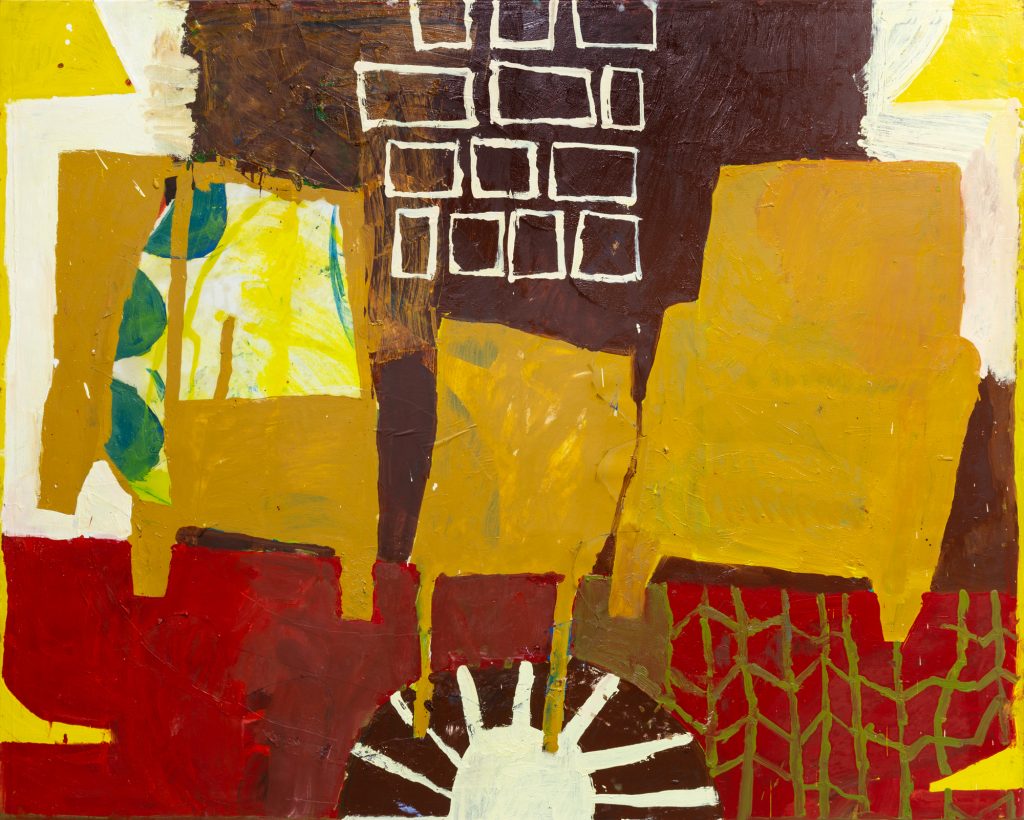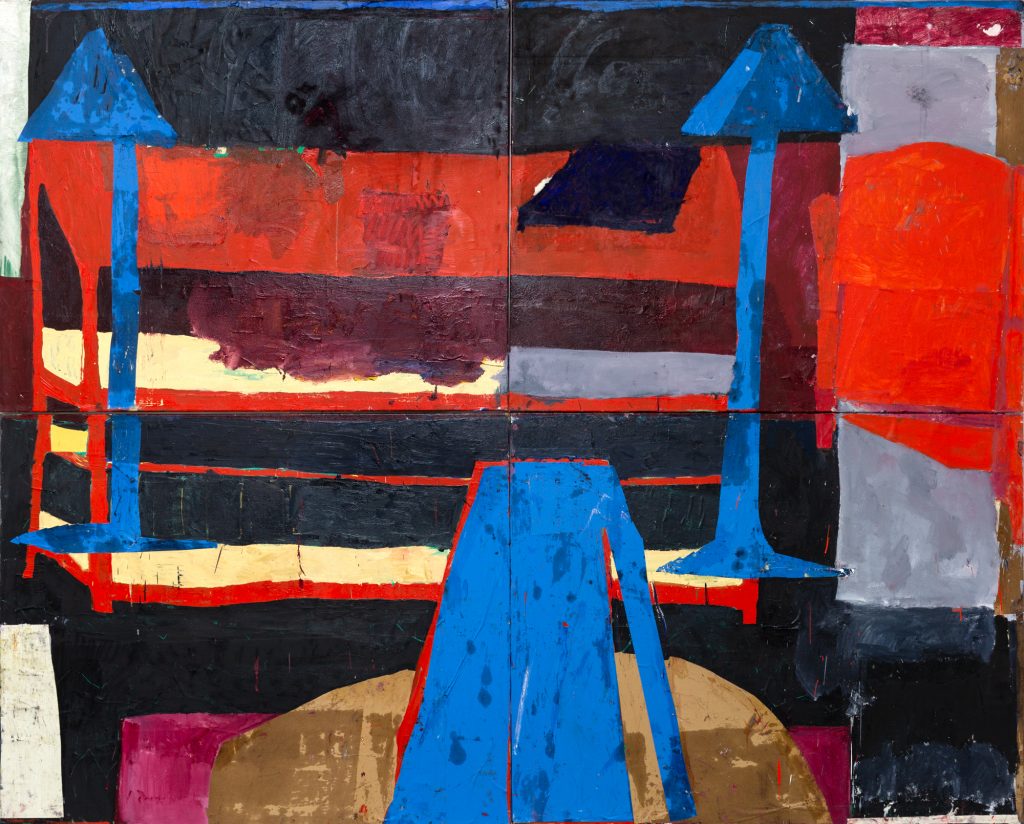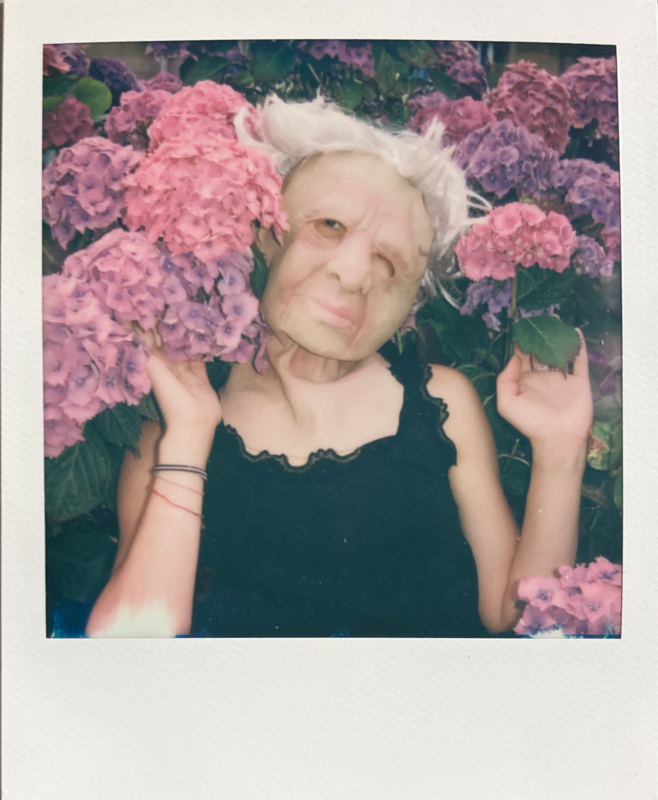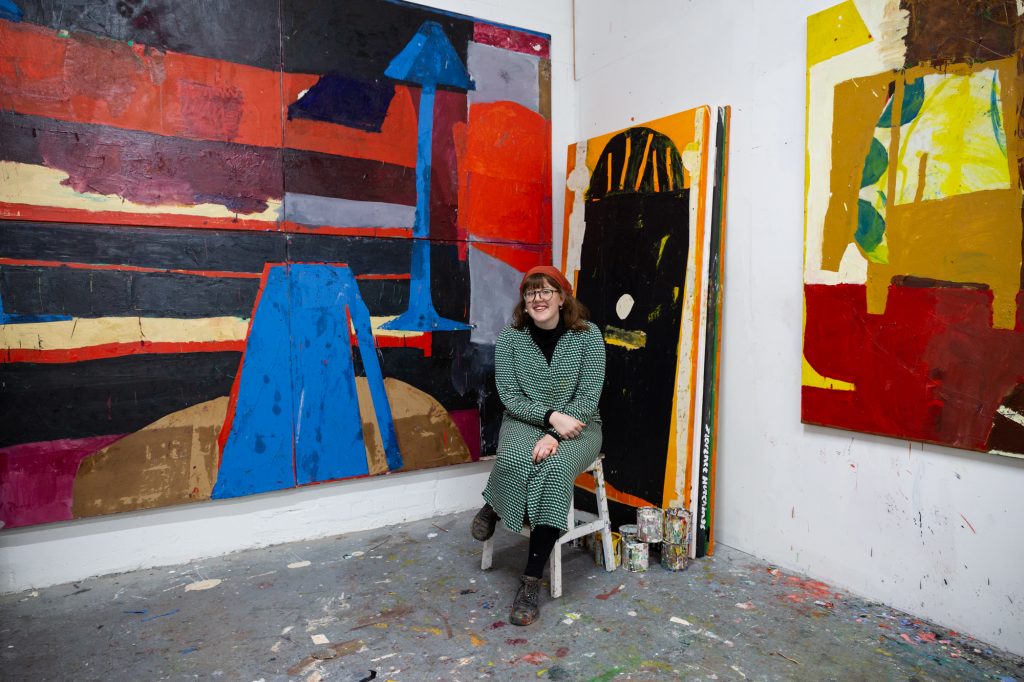
Florence Hutching in her sudio. Photography: Nick JS Thompson.
London based artist Florence Hutchings recently sat down with art historian, writer and curator Hector Campbell to discuss her prolific sketching of the everyday, her playful use of colour and scale, and her adoption of domesticity as her principal subject matter, as well as her upcoming solo exhibition, The Doors of Perception, with Delphian Gallery in Paris, which opens on March 27th.
Hector Campbell: Drawing from life appears to be an important starting point in your practice, and you’ve spoken in the past about producing up to thirty preliminary sketches for some paintings. How large a role does drawing play in the production of your paintings? And what level of experimentation or chance do you allow yourself once you begin work on a painting?
Florence Hutchings: Drawing does play a fundamental part in my practice, but the way the drawings come about varies all the time. I often have days away from the studio, just drawing at my flat. It is something I find really important to find different places to work at different times, as it is vital to realise that an artist’s whole practise cannot solely be in the studio. I do also draw a lot in the studio, this seems to come less from life and more from previous ideas I’ve worked with, I try to push these ideas further by drawing partly from imagination.
When it comes to making the paintings, I never work as if I am making a transcription from the drawings. Instead, I let different drawings influence different aspects of the work, for example part of the composition or the subject matter. At some stage of working on a painting I find it important that I no longer have the drawings up on the studio wall, I take them down so that when I’m working I’m purely having a conversation with the painting.
H.C: Bold, vibrant colour and unusual or unexpected colour choices and combinations have become a hallmark of your artistic output, with household objects and interiors often depicted in unpredictable palettes. How do you approach your selection of colour?
F.H: Colour is so important in my work. The way a palette comes about is never really on purpose, but usually through chance and trial and error. As much as I enjoy a vibrant palette I also think it important to, at times, limit the colours I use so that there are just a few different tones on one canvas. This is something I really explored with my door series for my upcoming show with Delphian Gallery, some of the paintings are purely black and white such as Lamplit Door. I enjoy working this way as it made me explore different variations of each colour, working with ten different types of blacks and ten different types of whites can be just as exciting as working with bright reds and yellows.
At times my palette comes through ways I never would have considered. For instance, I once made this purple and green painting and was thinking to myself “I wonder why I picked those colours”, only later did I notice I was wearing both those colours in my outfit. The same thing has happened with motifs in my work, I’ve looked at my bedsheets before and been like “That’s where that pattern came from!”
Florence Hutching, Living Room Interior, Oil paint and collage on canvas, 200 x 160cm.
H.C: You often produce works in discernible series, for example your debut solo exhibition ‘Seating Arrangement’ with Delphian Gallery saw you present a body of work based around the chairs in your apartment. Is this formation of series a natural occurrence in the way you work? And what drew to depictions of domesticity to begin with?
F.H: I really enjoy working with a variation on a theme, I think it is a great way to explore a subject matter to its full potential. I also like to work on quite a few canvases at the same time, so working on a theme allows them to feed into each other. Then when they come to be shown it is as though the paintings are talking to each other – they have their similarities but they all have their differences as well. Many artists I love work this way as well; Denzil Forester has been painting night club scenes for most of his career, Alfred Wallis almost exclusively painted ships and Gillian Ayres often repeats motifs within her works at different points.
In terms of what drew me to domesticity to start with, it was during my first year at Slade. I was working a lot on abstract paintings, which although I was enjoying at points I started to get very stuck and I found it difficult to work without referencing anything. However, I had always drawn from life and had sketchbooks filled with these drawings, so I just thought why don’t I start working from these books? I do like still to merge abstraction with the everyday though, and I enjoy it when the viewer cannot immediately tell what they are looking at, they have to make up their own narrative at times as to what is on the canvas.
H.C: Similarly to your irregular employment of colour, you also frequently fluctuate between scales, for example your inclusion in the 2019 group exhibition ‘Kaleidoscope’ at the Saatchi Gallery saw works sized between 400 x 350cm and 140 x 90cm. How do you tackle the matching of subject matter with scale? Is there a temptation to work on a 1:1 scale when painting from life?
F.H: Working at different scales is so important to my practice, and I tend to always be working on something very small alongside a large scale work. Saying this though, I cannot deny that working on a huge scale is great fun and exciting, such as with the Fruit and Veg Market painting that was exhibited at the Saatchi Gallery. It is of course very challenging, but that’s part of what makes it so physical and demanding.
Recently, I made a new large scale painting called Two Lamps at Night (300x240cm) for my upcoming Delphian exhibition. It’s made up of four canvases which was a really exciting and a completely new process for me. Working on this scale really pushes my use of collage, which is great for large works as it covers huge sections of canvas very quickly and can easily be painted over or ripped off. I’ve recently been working on another piece using this technique as I found it such an accessible and exciting way to work on a large scale. Saying this, I do have six 60x40cm canvases on show at Beers London at the moment and these were also great fun to work on, I tried to capture the physicality of my large scale works but on a much smaller scale.
Florence Hutching, Two Lamps at Night, Oil, acrylic, oil bar and collage on canvas, 300 x 240 cm (made up of four 150x120cm canvases).
H.C: Beers London in Shoreditch recently opened a two-person exhibition, ‘A Kindred Spirit’, of your works alongside that of your father Mick, a sequel to 2018 ‘Objects in Translation’ exhibition at Nucleus Arts Centre in your home county of Kent. To what extent has your father’s practice influenced your own? And does having an artist parent help to reassure you when pursuing a career as an artist?
F.H: My dad has had such a massive influence on my work, and it is really great being able to talk about each other’s work on a regular basis, and be very honest about how we feel about particular pieces. Having an artist parent was great even in terms of growing up, I was always surrounded by art and art books and regularly visiting exhibitions.
I hated art at school but my dad always reassured me that if I wanted to do it, a foundation would be a true representation of painting and art school. Therefore, I did my foundation at UCA in Rochester where I’m from, and it was fantastic. To anyone who isn’t sure whether to do a foundation or not – do it!
H.C: Your upcoming solo exhibition with Delphian Gallery in Paris, ‘The Doors of Perception’, takes its title from the 1954 Aldous Huxley philosophical essay and book. Aside from your previously discussed visual artistic influences (amongst them Henri Matisse, Betty Woodman, Gillian Ayres and Rose Wylie), what inspiration do you take from other cultural sources? And what does the appropriation of Huxley’s title add to the upcoming exhibition?
F.H: I’ve always said how important looking at various artists is for my work, but there are also many other things which I think influence my practice in different ways. As I said earlier about the clothes I was wearing affecting my palette, things like that happen all the time. From the books I read, or the audiobooks or podcasts I listen to in the studio, things seem to slide into my work without even noticing.
I felt The Doors of Perception was an apt title for the show as Huxley’s book delves into seeing the world in different ways, and how and if that is at all possible. I think it worked well for my work as the paintings help you to see the world differently. It makes you notice, The Door or The Living Room or The Two Lamps at Night. Art, in general, is just a great way to see the world in a different light, which is what makes it so fundamental.
Florence Hutching, The Doors of Perception, with Delphian Gallery in Paris, opening March 27th then running until April 3rd. Address: ChezKit, 17 Rue du Chemin de Fer, 93500 Pantin, Paris, France.
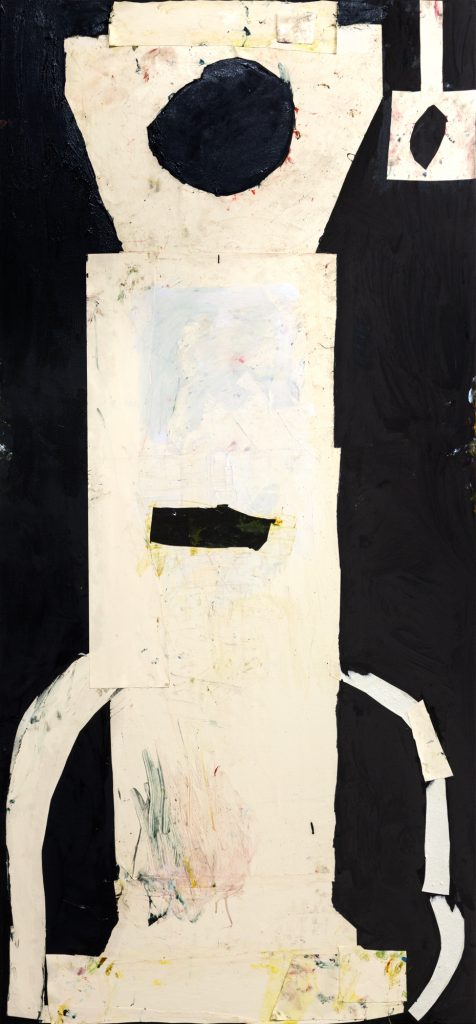
Florence Hutchings, The Lamplit Door, Oil, enamel and collage on canvas, 200 x 90 cm.
